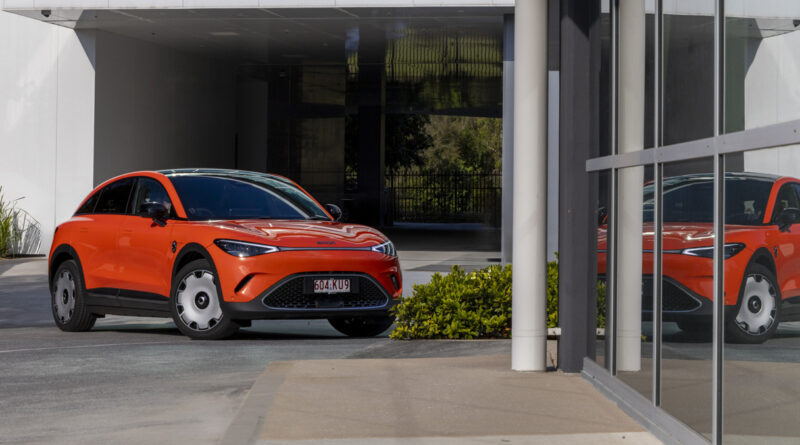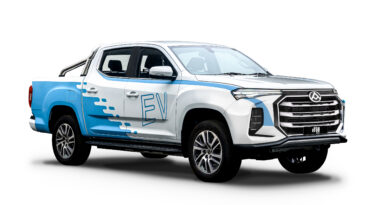2024 Smart #1 and #3 review: Re-born brand delivers compelling Volvo EX30, Tesla and BYD rival
Smart’s back, baby.
The brand that delivered the city hero ForTwo and grinningly-fun Roadster earlier this millennium returns as an EV-only proposition, a joint-venture between Mercedes-Benz and Geely.
Two small crossover SUVs are offered – the awkward-bummed #1 and sportier-looking #3. Styling’s done in Germany, while build and electric components hail from China.
Both models use a 62kWh (useable) battery, have a single rear mounted motor good for 200kW and 343Nm, and offer range between 425km and 455km.
There are also hot Brabus versions of each, which feature body kits, racy microfibre suede trim and an additional electric motor over the front end. These deliver 313kW/584Nm, and impressively crack 100km/h in under four seconds.

Those who’ve been paying careful attention will note Volvo’s EX30 EV shares the Smart’s spec, as it also hails from the house of Geely.
READ MORE: How and where to buy a Smart in Australia – we get the buying experience
READ MORE: Rugged Smart #5 EV off-roader locked in for Australia in 2025
READ MORE: Volvo EX30 road test – driving the Smart #1 and #3 sister car
While Australia’s market is now comprehensively flooded with small and small-ish EVs – especially Chinese ones – Smart’s wisely leveraging its Mercedes-Benz links to push the #1 and #3 into a more prestige space.
The cars’ design, cabin quality, included features and safety go a long way to justify the premium push, and the #1 and #3 both land a few grand cheaper than the Volvo alternative, starting from $54,900 and $57,900 respectively.
You’ll pay similar for a Tesla Model 3/Y, Renault Megane E-Tech, Hyundai Kona Electric and Kia Niro Electric, but you’re in a pricier realm than the likes of a BYD Atto 3 or MG4.
It’s a busy pool, giving buyers plenty of choice, and Smart’s a welcome returning player, even if it re-launches at a time of EV price reductions and cooling sales.
There’s another key thing counting against Smart. The brand of old was sold through most Mercedes dealerships, but there’s now zero affiliation with Mercedes-Benz Australia.
Smarts are exclusively imported and sold by LSH Auto, a giant conglomerate operating three Mercedes-Benz dealerships in Australia: Sydney, Melbourne and Brisbane.
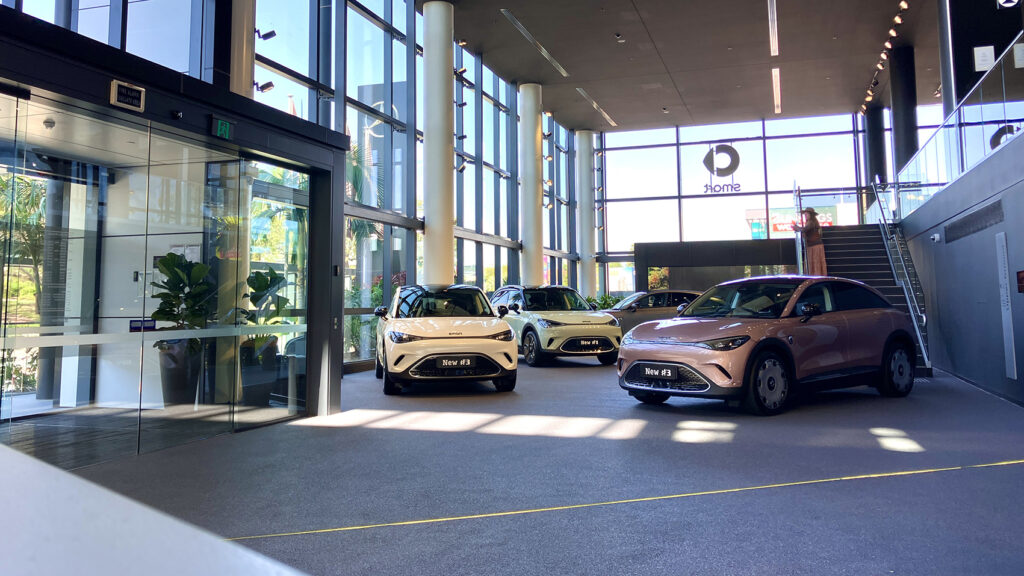
If you want to buy one, these three spots are – for now – the only places where Smarts are shown and retailed. Positively, as LSH has giant, dazzling showrooms, there’s a high-end feel to the Smart buying experience, as we found during a tour of the Brisbane facility.
2024 Smart #1 and #3 price and equipment
Specification is shared between the #1 and #3 models, and each comes in three different grades.
Entry-level is the Pro+ costing $54,900 as a #1 and $57,900 the #3. There’s a premium for looking stylish – in the metal the #1’s rear end’s a bit gawky (like a Mercedes EQB), while the sleeker coupe-like rear #3 is the prettier of the pair, offering some Benz A-Class vibes.
Inclusions are good from the get-go.
The Pro+ scores 19-inch alloys, panoramic sunroof, LED headlights, power tailgate and a Type 2, Mode 3 charging cable.
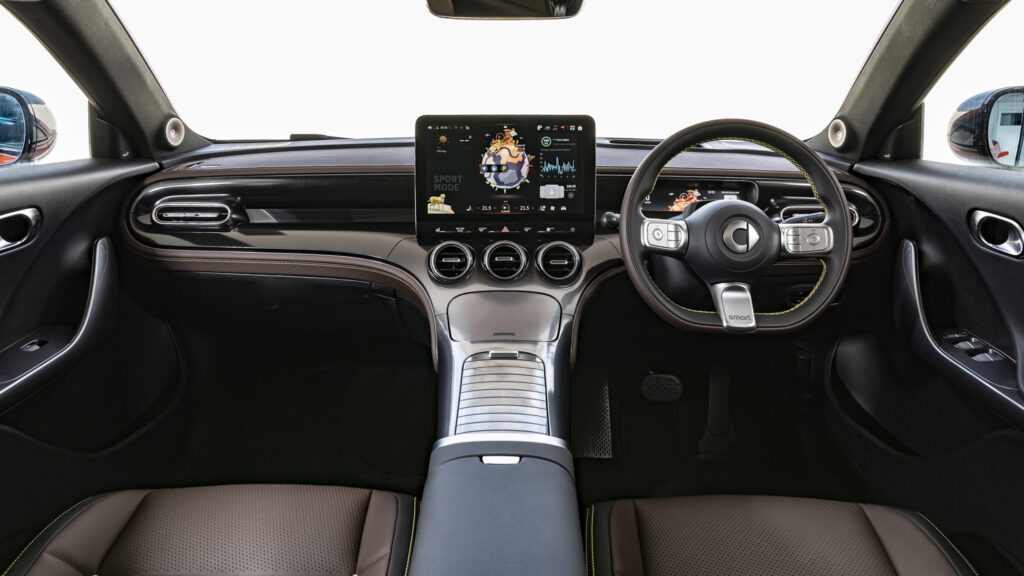
Inside there are quality-feel cloth seats with funky rivets, power adjust and heated driver and passenger seats, an AI-integrated 12.8-inch infotainment screen, skinny 9.2-inch instrument cluster, wireless CarPlay and Android Auto, wireless charging, cooled central armrest bin and Smart’s Advanced Intelligent Driving with Autopilot driver assist.
The mid-spec Premium adds $4000 to the bill – $58,900 the #1, and $61,900 the #3 – and feels a proper step-up for your dollars.
Added is faux leather upholstery, a 10-inch head-up display, Beats sound system, improved AC charging (up from the Pro+ 7.4kW to 22kW), an energy saving heat pump, Matrix LED headlights and ambient lighting.
If you’re a Bad Boy Brabus buyer, there are go-fast goodies to go with the extra electric motor and all-wheel-drive.

There’s 20-inch alloys, a Brabus body kit, Brabus courtesy lights, Brabus badging, black logos, simulated engine sounds (not too naff, either), microfibre suede for seats and steering wheel, sports-style pedals, Brabus headrests and lots of red – see the seat belts and trim stitching – to remind you’re the sporty type.
Although there’s currently no ANCAP crash safety rating, our Euro NCAP cousins have done so (the results are likely to be shared) and both the #1 and #3 returned 5 Star ratings.
Included driver assist features are autonomous emergency braking, automatic parking assist, automated lane change assist, 360-degree camera, traffic jam assist, emergency lane keep assist, blind spot detection, adaptive high beam, traffic sign recognition and front and rear cross traffic alert. Good haul there.
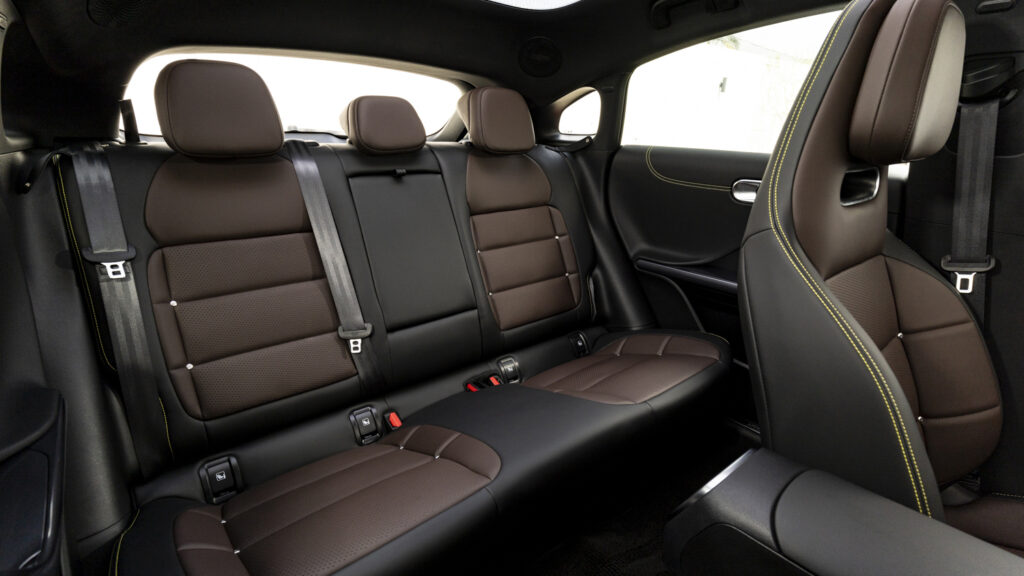
There’s a range of dull and bright colours, including black, white, silver, red, green, yellow, blue and a matte grey.
The #3 adds exclusive colours: Ceramic cream, Photon orange, matte Electron blue, Solar silver and even Sonic pink.
Maximum power is 150kW using a DC public charger, with the charge time quoted as 30 minutes to go from 10-80 per cent of charge.
A 7.4kW home wallbox will do the same job in under seven hours, but the Premium and Brabus can take AC charge rates of 22kW, so this would complete the task in less than three hours.
Disappointingly, warranty is only five years/150,000km. For a new brand keen to quickly gain trust, it’s surprising Smart hasn’t matched other newbies with seven years or more, while not having unlimited kilometres is poor form.
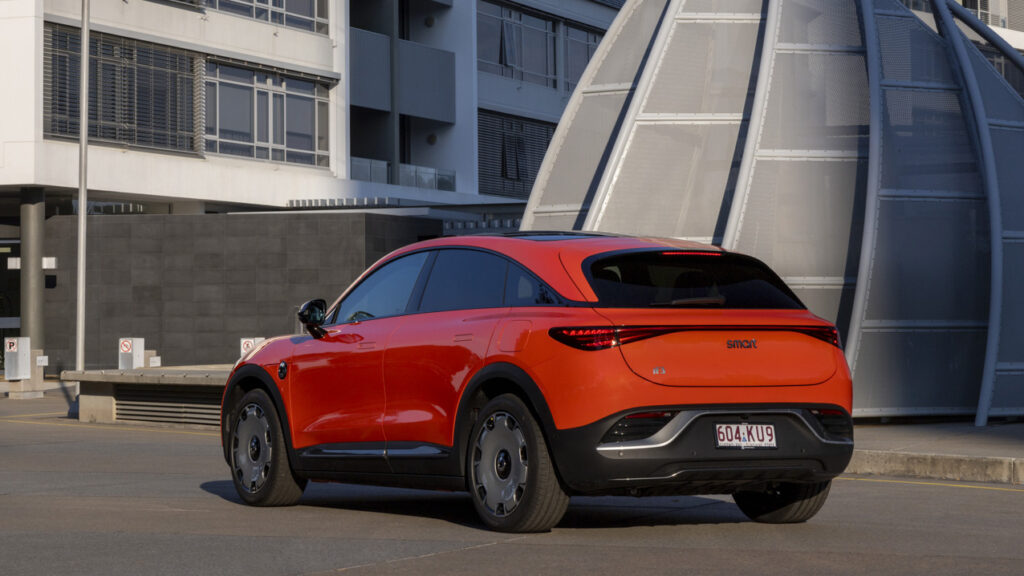
2024 Smart #1 and #3: What we think
Call me a snob, but the Mercedes association immediately gives these Smarts a leg-up in the desirability department.
The #3 has beautiful, fuss-free lines. Its lights and proportions have Benz DNA, while pop-out door handles and the auto tailgate opening by touching an invisible pad in the Smart badge’s ‘a’ is a delightful touch.
The #1’s design is more challenging. It’s a bit top heavy like a Tesla Model Y, and is boxy enough to remind of a Kia Soul. Brabus body kits add a dash more menace, but neither #1 nor #3 Brabii look truly sporty after the tuner’s waved its aesthetic wand.

Move inside and there’s more Mercedes influence, especially the #3’s trio of central-mount round air vents. The #1 presents its centre console slightly differently, but both feel well styled and finished, there are oodles or storage options and the standard-on-all chilled box under the armrest is incredibly useful, even if it doesn’t accommodate a bottle of bubbly.
Presentation and space feels good for the segment, and there’s light fantastic with a whopping panoramic roof on all. Sadly, only the Brabus features an electric shade to cover it when desired.
There’s a youthful, fun flavour to the styling, and it’s quite minimalist with the bulk of controls going through the mighty 12.8-inch infotainment screen. Climate control is permanently illuminated, but it’s still annoying to prod a screen to change temperature and air speed.
The screen’s HD and quick to respond, but the background image (which we couldn’t work out how to remove) was a complicated mess of distraction (see picture below).
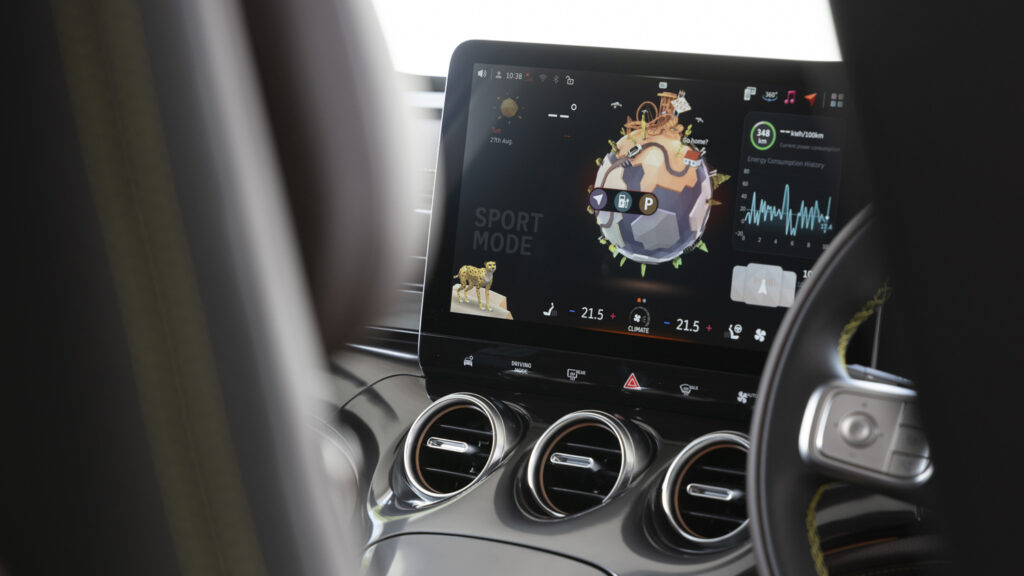
Smart’s also introduced avatars – a fox for the #1 and cheetah the #3 – which are supposed to be your engaging travel partner. Ours proved quite dormant and useless as we prodded the cartoon image on the screen, simply adding to our confusion.
Better is a 9.2-inch skinny digital driver display. It shows your vitals through the steering wheel, eradicating anything superfluous. It’s a lesson in simplicity.
Dash and doors feature soft touch plastics, seats are spongy and classily panelled, and there’s an absence of cheap elements. There’s less of the flimsy-feeling eco trim you’ll find in a Volvo EX30.
It’s worth stretching to the Premium if you can. The fake leather feels excellent and ups the sponginess even further. It’s a spacious, cosy space to travel in, while the bonus of a head-up display and pumpin’ Beats sound system boosts the prestige credibility.
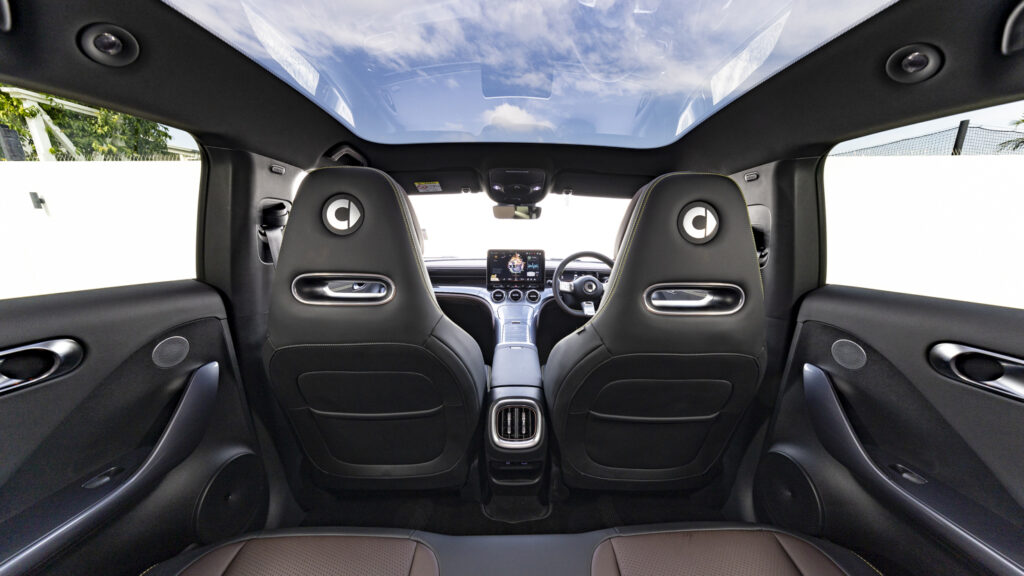
If you need decent rear space the #1’s the pick. Its rear seats slide on runners for better versatility, and there’s a nice recline to the chairs. The #3’s back seats are set in position, but still offer reasonable leg room for two adults.
The boot’s more of an issue. It’s smaller on the #1 at 323L, while the longer #3 gives 370L. Both are way down on the likes of a Hyundai Kona or Kia Niro.
Our drive route was annoyingly limited. We spent a bit of time navigating city streets, then desperately tried to find some decent backroad corners (we failed), before sitting in highway traffic for an hour. It made it hard to properly assess the Smarts. Not least because we were rapidly shuffled between #1s and #3s, different grades and RWD or Brabus.
If we ignore the bonkers twin-motor ones for a sec, both Smart #1s and #3s deliver likeable if unspectacular drive experiences. Probably ideal for the target audience.
In town they’re quiet, responsive and with decent shove – 100km/h is up in 6.7 seconds (#1) or 5.8 seconds (#3) – and are incredibly easy to drive. There’s not much steering, brake or throttle feel, robbing keener drivers of much engagement, but for A-B urban work they’re rather bloody lovely.
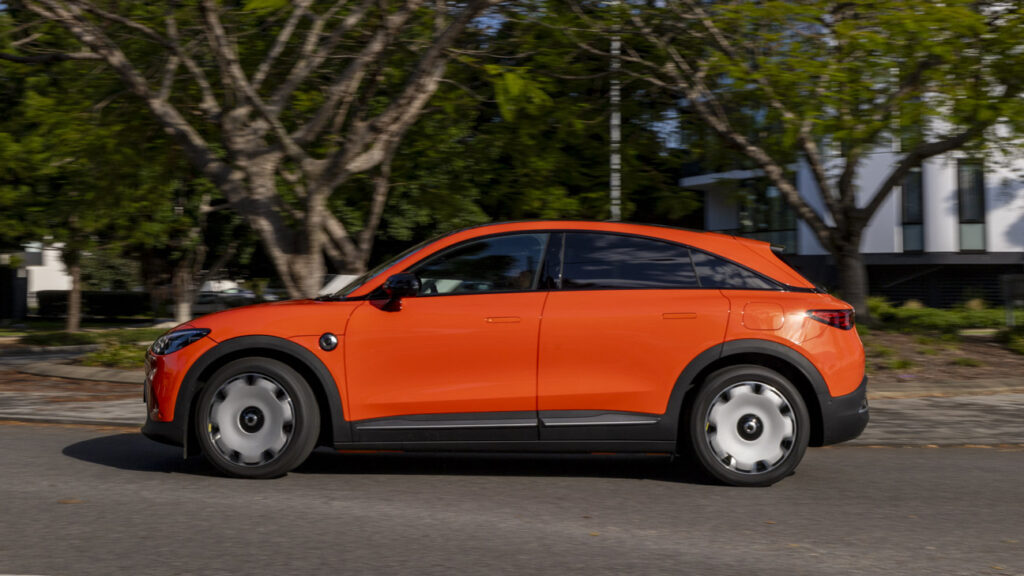
We struggled with the regeneration as force was altered through the screen rather than handier steering wheel paddles, and never managed to successfully test one-pedal driving.
Crappier road surfaces showed the suspension to be a dash firm, but the trade-off is a car that feels neatly tied-down and controlled when cornering. There’s decent balance to these little Smarts, while grip and body control proved good enough for a bit of rear-drive fun.
The #3 has slightly lower suspension and is 40kg lighter than the #1 – 1780kg versus 1820kg – making it the marginally more agile EV. Even so, don’t confuse these Smarts with sports cars.
And here’s the problem with the Brabus.
Like the Volvo EX30, there’s simply too much power, torque and acceleration for the chassis, brakes and tyres. The #1 Brabus hits 100km/h in 3.9 seconds and the #3 Brabus in 3.7 seconds. These are ‘sensible’ small family SUVs, remember. And those are supercar numbers.
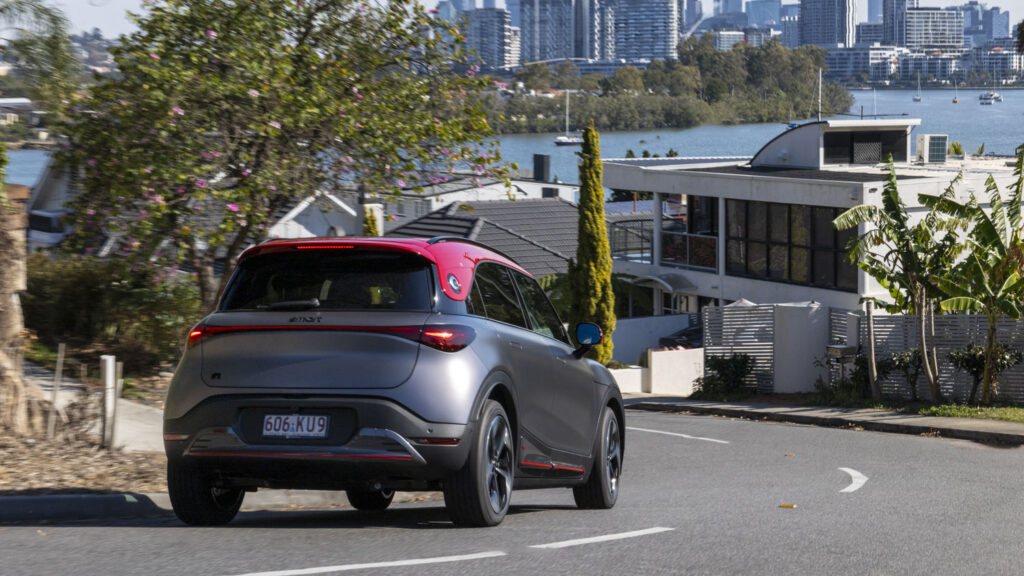
The all-wheel-drive means the power mainly gets down to the road, but it’ll still squirm around and I’d advise on keeping that steering wheel perfectly straight. With 313kW and 584Nm you’re in silly speed numbers very quickly, and you barely realise it.
In Brabus mode you have a choice of artificial engine notes, and these give a helpful aural signal of your misbehaviour. The two motors’ response is mega in this mode, while steering stiffens up slightly too.
There’s just not the feel in corners though, nor much finesse. It actually feels a bit pointless, robbing you of fun. I’d suggest Smart Brabus owners would be happier paying an additional $10k to get better sorted brakes, suspension and rubber, much like Polestar did with its 2 Performance.
But hey. It’s Australia’s cheapest way to go sub-four seconds to 100km/h (in a new car), and that in itself is praiseworthy.
It’s just that the #1 and #3 in Pro+ or Premium trims and a single rear motor are better all-round cars.
Our test, although not over as varied a course as we’d have liked, returned 15.8kWh/100km the Pro+, and 18.5kWh/100km the Brabus, suggesting the energy use claims to be accurate.
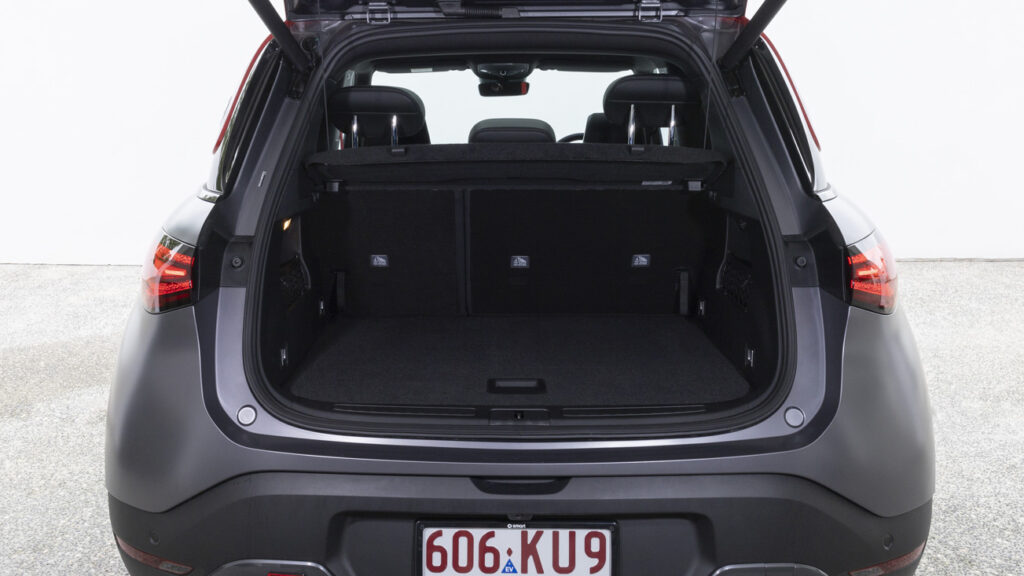
2024 Smart #1 and #3: Verdict
Next to a sea of new China-sourced EVs, these Smarts with their Euro flavour feel refreshingly different.
Material quality and presentation impress, specification’s spot-on, the drive experience is generally very good and they’re quite lovely things to travel long distances in. All offering over 400km range is another strong selling point.
Less good is the warranty and only three points of sale, although the latter is of little concern if you live in or around Sydney, Melbourne or Brisbane, which most of us do.

The #3 Premium is the best balance of value, equipment, range and style. But there’s a Smart #1 or #3 to suit many budgets and performance wishes, giving this revived brand a solid chance in Australia’s brave – and competitive – new EV world.
SCORE: 3.5/5
Smart #1 specifications
Price: $54,900 (Pro+); $58,900 (Premium); $67,900 (Brabus) plus on-road costs.
Basics: EV, 5 seats, 5 doors, small SUV, RWD and AWD (Brabus)
Range: 400-440km (WLTP)
Battery capacity: 62kWh (useable)
Battery warranty: 8 years/150,000km
Energy consumption: 16.8-18.2kWh/100km
Motor: 1 rear synchronous, 200kW/343Nm / dual synchronous, 313kW/584Nm
AC charging: 7.4kW (Pro+) or 22kW, Type 2 plug
DC charging: 150kW, CCS combo plug
0-100km/h: 3.9 (Brabus); 6.7 seconds (Pro+ and Premium)
Smart #3 specifications
Price: $57,900 (Pro+); $61,900 (Premium); $70,900 (Brabus) plus on-road costs.
Basics: EV, 5 seats, 5 doors, small coupe SUV, RWD and AWD (Brabus)
Range: 400-455km (WLTP)
Battery capacity: 62kWh (useable)
Battery warranty: 8 years/150,000km
Energy consumption: 16.8-18.2kWh/100km
Motor: 1 rear synchronous, 200kW/343Nm / dual synchronous, 313kW/584Nm
AC charging: 7.4kW (Pro+) or 22kW, Type 2 plug
DC charging: 150kW, CCS combo plug
0-100km/h: 3.7 seconds (Brabus); 6.7 seconds (Pro+ and Premium)

